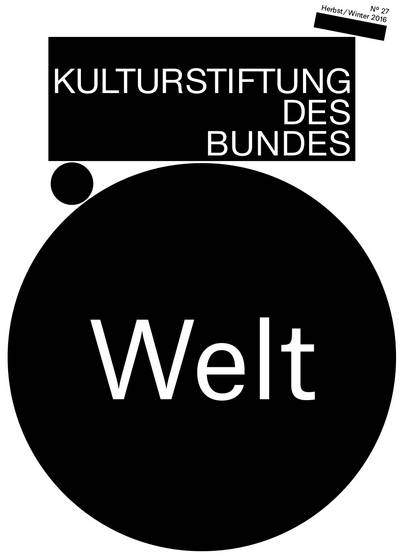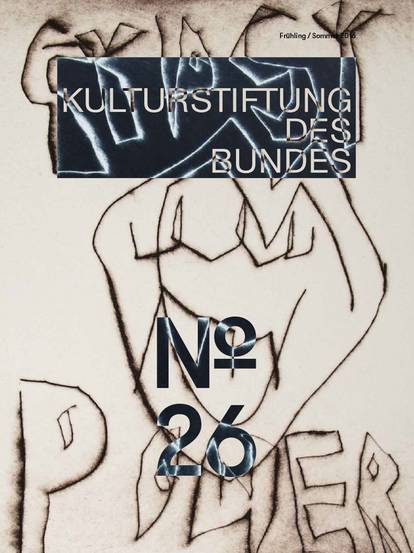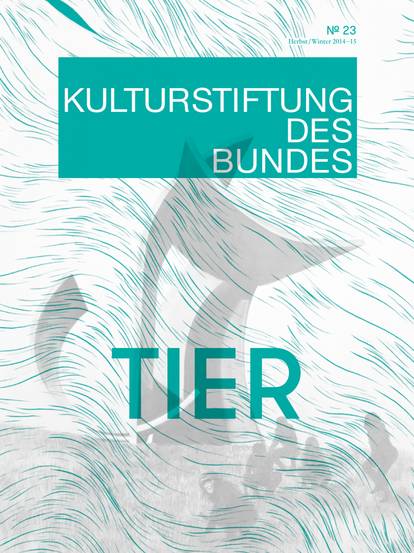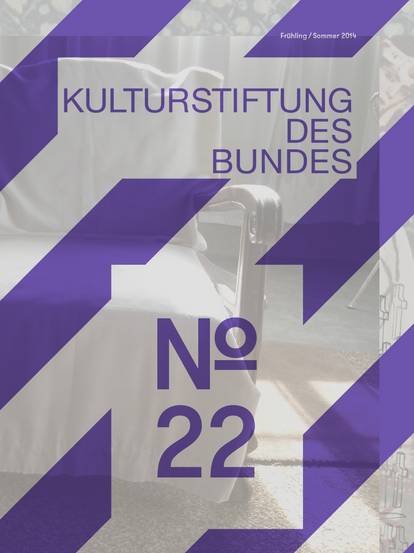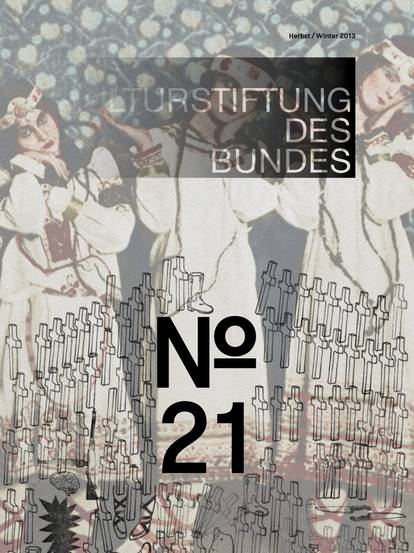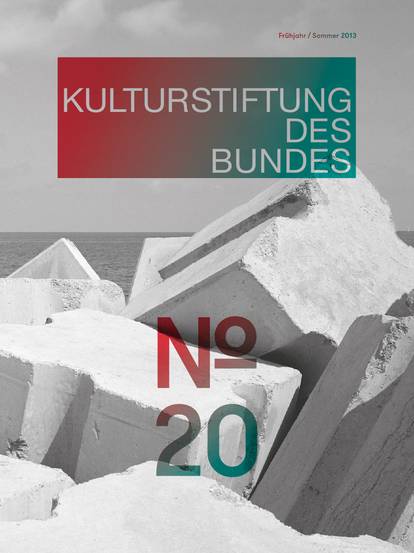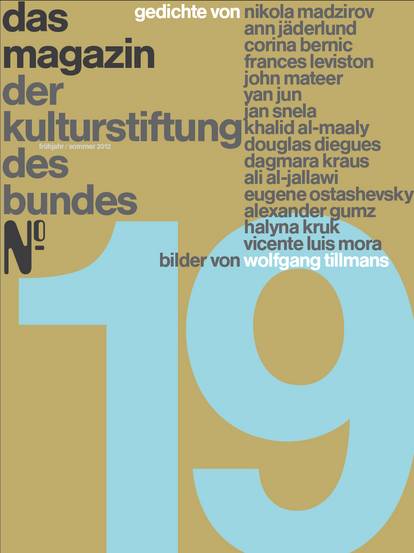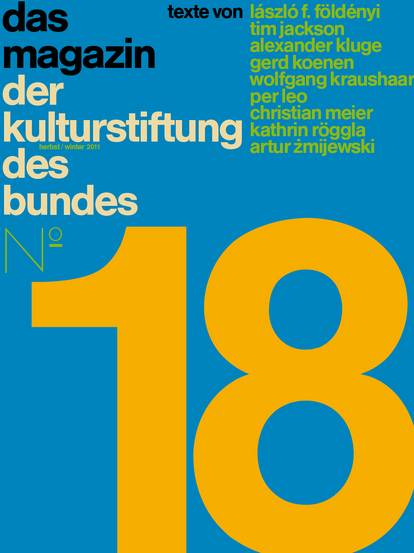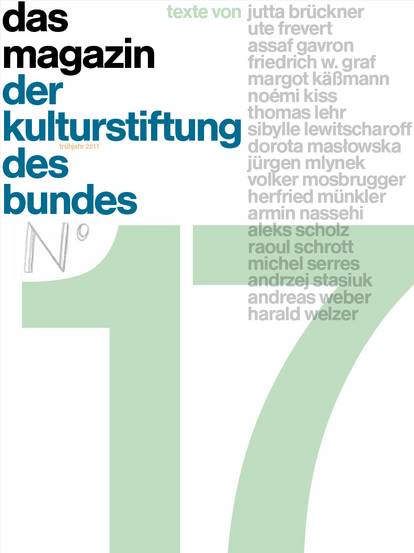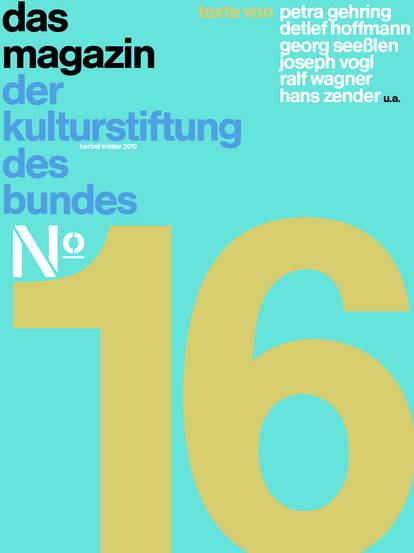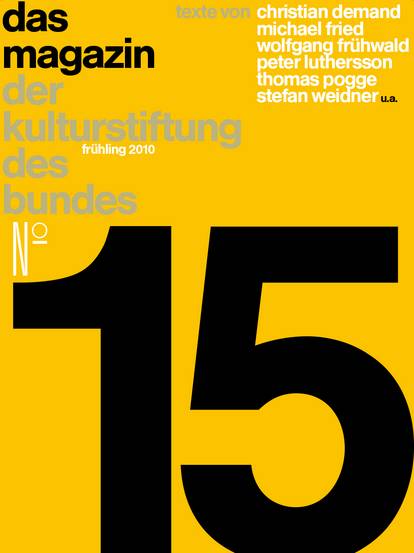“The discourse of power engenders monsters.” (Michel Foucault)
The lifeline of Europe’s Roma goes back a thousand years – and for most of that time, the Roma have been victims of projections, created by the “evil eye” of the non-Roma. Today Roma look back and express their views in the sciences, in literature and the fine arts. Armed with post-colonial theory, they now decide for themselves how they wish to portray themselves, how they wish to appear. Even as a fortune teller, predicting the fate of the financial market from the palm of its hand. In the following, the writer Manuel Gogos speaks with the American theorist Ethel Brooks, the English artist Daniel Baker, the Hungarian art historian Tímea Junghaus, the music ethnographer Petra Gelbart and the Sinto musician and activist Romeo Franz.
Deconstructing the Gypsy
Manuel Gogos: The “gypsy” is a European invention. Let’s take a look at the archaeology of these images and deconstruct them together. These projections of wild men, seductive women and scruffy, but happy children. In effect, the Roma were long assigned attributes comparable to those of the African and Asian “primitives” in colonial and ethnographic discourse. Is the history of the Roma in Europe one of “inner colonisation”?
Romeo Franz: They were a marginalised group, like executioners or knackers. Antiziganism is now over 500 years old and has since become an integral part of Europe. The construct of the “gypsy” is merely a facsimile of poor customs, a hologram of uncivilised behaviour. And a warning for members of the majority society to adapt.
Daniel Baker: I think designating the “other” as a repository of fears and desires is ambiguous. Actually I believe this colonisation is something of a projection itself. By various means, the Roma have set themselves apart from the majority society. And in doing so, they provided a kind of projection screen onto which others in turn projected their constructed images.
Tímea Junghaus: From an art-historical perspective, there’s evidence that confirms this. In the panopticum of modernity, we see that artists of Central Europe never felt the need to travel to Haiti. It was because of the character of the Roma, the darker skin, the black hair, the unconventional manner of dressing, these artists simply visited the “colony” which was closest to them – the Roma settlement. That’s where they found their “primitives”.
Petra Gelbart: I really like Daniel’s idea of this projection screen that the Roma represent for the majority population. But from the perspective of musicology, I would say there’s also a certain kind of tension there. Many Roma musicians, if not most of them, identify themselves with exactly these stereotypes. They say: yes, we’re fiery, we’re passionate, that’s what makes us strong! And the same goes for various music styles like Flamenco which really cannot be performed without this emotional component. The same applies to Gypsy Jazz which musically speaking falls into a completely different category. Despite how different they sound, people talk about them the same way.
Ethel Brooks: The parallels to colonialism are really, really strong. And so too are the parallels to orientalism. Like Edward Said writes, orientalism has less to do with the so-called “Orient” than it does with our own world, the “West”. I think this an important point. All of these projections have more to do with non-Roma, with Gadsche, than with the Romani, with ourselves. The crazy thing is that these projections have become a part of our relationship to one another.
Reading maps, reading palms
Manuel Gogos: Ethel, you were in the lecture performance “A Roma Model / The Cosmopolitan Other” with Daniel at the “Former West” festival at the Haus der Kulturen der Welt in 2013. Part of performance featured you, Ethel, reading palms, and you, Daniel, laying Tarot cards. This performative reference to the fortune-telling cliché – was this a critical, perhaps even post-ironic form of knowledge production?
Daniel Baker: At this particular event, what we wanted to do was transfer the imagery of fortune telling to speculating about trends in the financial markets. On the one hand, we used these images to refer to traditional Romani forms of knowledge production, but on the other, to emphasise the mechanisms of discrimination.
Ethel Brooks: For me the main focus was on the winding paths of knowledge production, regardless of whether it’s stock market speculation, or simply interpreting the past as they do in psychoanalysis. Divination lies at the centre of all of these forms of knowledge. What I found really fascinating and “telling” was the uproar we caused with our project. On the one hand, we had Roma activists saying “By using all these stereotypes, you’re hurting our cause!” And on the other hand, these awful people who said, “You are magical people, but you’re selling out your magic ...”
Storytelling
Manuel Gogos: There’s a cliché that the Roma are the guardians of the secret, but have no historical awareness – they live each day carefree like children. Despite the lack of written documentation for much of their history, couldn’t we argue that the Roma are in fact very conscious of tradition? Isn’t storytelling simply an alternative form of passing down one’s culture? Or is telling stories around a campfire simply another cliché?
Daniel Baker: Maybe storytelling is a cliché, but maybe it isn’t. It is, of course, historically relevant, simply because we the Roma are what I would prefer to call “independent” of the written word. Naturally, you could also call them “illiterate”. But in our type of communication, we’ve occupied ourselves more with generating visual and performative forms of meaning. I would say that the gypsy as the storyteller is a cliché, but one based upon a very old tradition, a ubiquitous practice. Stereotypes enter communities from the outside. But symbols can also gain meaning within communities. There’s a very fine line separating the two.
Travelling people?
Manuel Gogos: The Roma arrived in Europe at the dawn of the modern age as nations slowly began taking shape and the connection between one’s country/heritage and one’s identity became ever more entwined. Suddenly these strangers appeared and showed no interest whatsoever in a country of their own, not even in being a “nation”. But they were border-crossers and transnationalists par excellence. What exactly did the locals, the settlers, have against them?
Petra Gelbart: Let me turn the question around: why does the majority of the population find it so annoying that almost all of the Roma have long become settled themselves? I come from Central Europe and originate from a mix of different Roma cultures. Some of them cultivated a nomadic lifestyle, but that was very much the exception. There are ten to twelve million of us Roma in Europe today. We’re the largest minority, and Central Europe in particular is a region where millions and millions of Roma live, and have been living in the same place for over a thousand years. Yet this is erased from the current discourse.
Romeo Franz: Two hundred years ago, my great, great, great grandparents had their own houses. That shows me that there was always a desire to settle and put down roots. That was their ambition. Our identification is very strong. My grandfather fought for Germany in World War I. We are even regionally patriotic – we’re “Prussian Sinti”.
Ethel Brooks: I think part of our work is to reclaim this history of mobility, this “nomadic sensitivity”. But as a complex history, at least as complex as the history of America.
Tímea Junghaus: It’s a wonderful opportunity to rewrite this history from our own point of view. Historically speaking, this so-called “nomadic experiment” entails revisiting smaller and larger genocides: fleeing, hiding, moving on, becoming victims again, and so on.
In the shelter of trees
Manuel Gogos: For centuries the Roma sought refuge in the forests. Those who lived in “civilisation”, in towns and cities, regarded the forests as impervious, menacing. The famous Polish Roma poet Bronislawa Waj (Papusza) once wrote, “No one understands me, no one but the woods and rivers ...” Was living outdoors really an expression of the Roma’s special affinity for nature? Or was the forest primarily a place of refuge – in other words, does the history of this relationship demand a political reading as well?
Ethel Brooks: At a very basic level, yes, the woods truly served as a hiding place. What’s more, the Roma were not allowed to own land. In the Habsburg Empire, in Spain, France, England, there were restrictions in place everywhere. Where else could they go? And what were they permitted to do to earn their living? My mother grew up with horses, she slept in the stables or in the open field, and up until her death she felt nostalgia for this kind of life. But the reason behind it wasn’t her mystical connection to nature. It was simply how her family earned its living.
Bohemian artists
Manuel Gogos: There are these negative associations with the Roma. Yet on the other hand, many people identify themselves with them. The hippies dreamed of the campfire romanticism of these “European Indians”. And the anti-bourgeois attitude of many artists seemed to correspond to the “Bohemian” lifestyle. For example, there are the romanticised portrayals of gypsies in Achim von Arnim’s “Isabella von Ägypten” or Federico García Lorca’s “Poema del cante jondo”. Are these forms of respect and admiration? Or rather “positive discrimination”?
Ethel Brooks: It was a product of the 19th century – the romantic period, to be more precise. And it’s absolutely symbiotically linked to discrimination and racism. I love García Lorca, his gypsy romances are beautiful in so many ways. But it’s still an appropriation of the label “gypsy”. It’s the same thing that recently happened with the song “Drunk in Love” by Beyoncé where she simply integrated a sample of the voice of the Hungarian Roma singer Mitsou.
Gypsy Kings
Manuel Gogos: Generally Roma like to be regarded as “born musicians”. But that glosses over the fact that musical mastery is the product of hard work. There are countless stories, like the one of the “gifted” guitarist Django Reinhardt who supposedly established European jazz in a caravan park near Paris. Or the success story of the Gypsy Kings. Where does this special connection to music come from, which is also present in the clichés of the beautiful Carmen or the Hungarian Csárdás fiddlers?
Romeo Franz: I have to say I know more unmusical Sinti and Roma than musical ones. We aren’t born with an instrument in our hand. We’re simply influenced by our environment. I myself play the violin and piano. My first band was an old-fashioned dance orchestra which played a kind of “dinner music”. Later I founded my first Sinto band, but we didn’t play the Hungarian Csárdás. German Sinti music is more oriented to Django, in the direction of coffee house music or swing. What’s remarkable is not the fact that Sinti and Roma are good musicians, but rather how much influence Roma composers have had on such famous composers as Liszt or Brahms. It shows that the minority culture provides important impulses for all of society.
Daniel Baker: Music is an iconic Roma art form and is accepted both within and outside the community. But it’s only one aspect of how it contributes to society. The idea that Roma life is inseparable from the creative process is very much alive in the music scene, but in other areas, it’s practically non-existent.
Self-portrayal in the arts
Manuel Gogos: But the Roma are becoming more visible in contemporary art as well. Artists are increasingly using media platforms to stage their alternative concepts. Is it their goal to present their own image of themselves in public, their own epiphanies?
Tímea Junghaus: Our European Roma Cultural Foundation recently opened a venue for Roma contemporary art in Budapest exactly when the political situation there left no other place open to Hungary’s Roma. As a result, “Gallery 8” became a venue of political intervention which aims to present its self-image through artistic means, not only in the service of its own community, but also as an integral part of the European art scene.
Manuel Gogos: Ethel, you took part in the exhibition project “Have a look into my life!” in Graz. What was the purpose of your project?
Ethel Brooks: In preparation for our exhibition project, we asked all sorts of people: which Romani words are most important to you, which are key terms? It was an attempt to re-appropriate the language. To reclaim our imagery, but also to reclaim our language.
Manuel Gogos: Another important, complex question deals with ethnicity in the arts. When Roma artists and intellectuals, such as Gabi Jiménez and Damian Le Bas, decidedly draw attention to their Roma identity – isn’t there a certain danger of portraying oneself as the “other” in art?
Daniel Baker: I think there are times when defining yourself as a Roma artist can be useful, and at other times, not so useful. I’ve often discussed this with other artists. Naturally each of us tries to generate as much attention as possible. And if self-labelling helps, that’s fine, at least for me. Labelling can be helpful. But in the end, that’s all it is – just a label.
“Gypsy Baroque”
Manuel Gogos: Matéo Maximoff was one of the first Roma fiction writers – he has been described as the “cultural memory of the Roma”. In his novel The Ursitory, he portrays a society which functions according to its own laws and values. Outsiders have regarded life in that society as highly mysterious. Daniel, you yourself are an artist who has played with symbols associated with the Roma like “roses”, “roosters” or “caravans”. Is it up to the viewer to decipher these hidden symbols? Or do they simply serve as superfluous decoration which conceals your political statement?
Daniel Baker: In the past ten to fifteen years, my works have made reference to something I call “Roma aesthetics”. It all goes back to my own beginnings as an artist, to when I was a kid, surrounded by certain objects in my family’s living room, all of which seemed to have an eloquence of their own and conveyed information about the cultural and social values of my community. It has been influential for my work, and still is today. I wish to introduce various audiences to Roma aesthetics in order to probe how much they can influence culture on a broader scale. You could say that my modus operandi is “infiltration”.
The camp
Manuel Gogos: One of the key motifs in artistic production and discourse at the moment is extra-territoriality, re-mapping, but also living in a camp. Historically, this was the “gypsy camp”, but also the slave quarter and later the concentration camp. Isn’t it true that this is something all too many Roma continue to experience even today? Being deported? Forced to live in a camp as “displaced persons”?
Petra Gelbart: No matter where and how the Roma actually live, everyone always assumes it has to be in a camp! There are millions of them everywhere, in cities and apartments, just not in a camp!
Daniel Baker: Nonetheless, there is a certain yearning for this form of coexistence. That’s the other side of camp life. This aspiration, communal life as vibrant and dynamic. And in this we see the continuation of discrimination. If someone in England wants to put a caravan on their land to lease out to holidaymakers, they receive permission. But if gypsies want to do the same, they are not permitted to.
Ethel Brooks: Right now I’m working on a book about the camp. It’s about reclaiming the camp as such, and I use the word “camp” deliberately. It’s about reclaiming a piece of Roma history. For what it’s worth, the “gypsy camp” stands in contrast to the monumentality of the nation.
Porajmos (genocide)
Manuel Gogos: For centuries Sinti and Roma have suffered from persecution, marginalisation and discredit, and biological eradication. Out of some 500,000 Sinti and Roma who lived in countries occupied by the National Socialists, no more than 10 percent survived. This was undoubtedly a case of genocide. Yet far into the post-war era, many people continued to deny that it was the result of racial persecution. So this isn’t simply a matter of Nazi persecution, but also a case of twisting historical facts and obscuring Nazi crimes after 1945?
Romeo Franz: The racist mindset, in which pseudo-scientists like Eva Justin or Dr Robert Ritter laid the groundwork for racially motivated extermination by the Nazis, continued without interruption after 1945. For now the victims sat opposite their perpetrators. Eva Justin conducted field research on the Sinti and Roma for the city of Frankfurt until 1962.
Manuel Gogos: You contributed to the Memorial to the Sinti and Roma Victims of National Socialism with a composition/sound installation titled “Mare Manuschenge” / “Our People” – a piece which directly refers to the fate of your mother and grandmother.
Romeo Franz: Romani Rose, the chairman of the Central Council of the Sinti and Roma, called me in 2012 and said he was looking for a violinist who could play just one single note at the ceremony. I tried, but at some point I couldn’t stand this note any longer. Instead I imitated a whistle that Sinti often use to call their children. It’s a sound that each of us recognise, it’s a bit like a mark of identification, a signal. Then I transposed it onto the gypsy minor scale. Shortly before the memorial was completed, I met with Dani Caravan, the Israeli architect who designed the memorial, at the construction site, and he said, “That’s it!” For me, it was possibly the most significant thing I’ve ever achieved in my life.

![[Translate to English:] Magazine 38](/fileadmin/_processed_/f/1/csm_Magazin38_Cover-Vorschau_921x1230_689f428dc3.jpg)
![[Translate to English:] Magazine 37](/fileadmin/_processed_/b/c/csm_Mag37_Cover-Vorschau_921x1230_b5129fdb2a.jpg)
![[Translate to English:] Magazine 36](/fileadmin/_processed_/2/a/csm_Cover_Magazin36__issuu_2f3cef97bb.jpg)

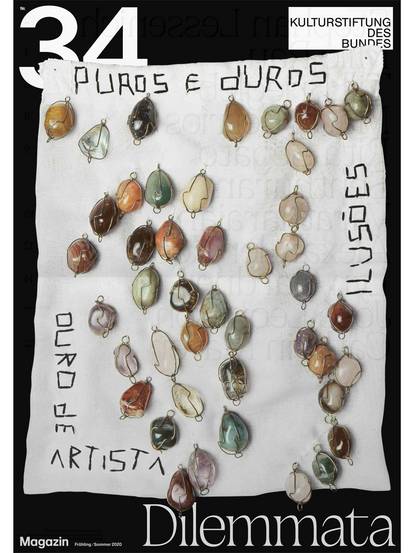
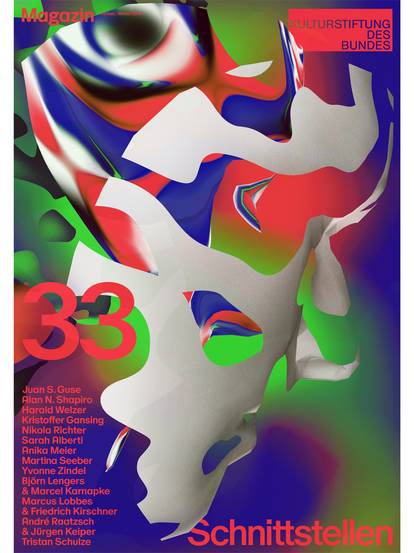
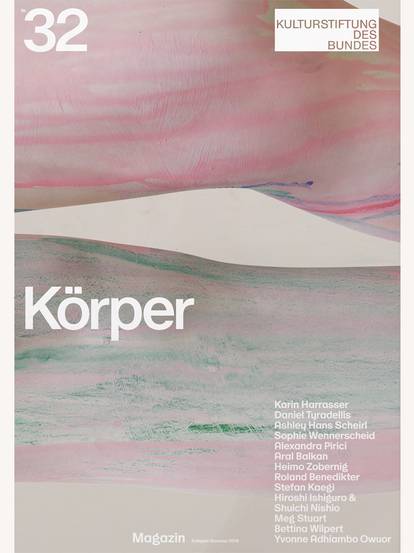
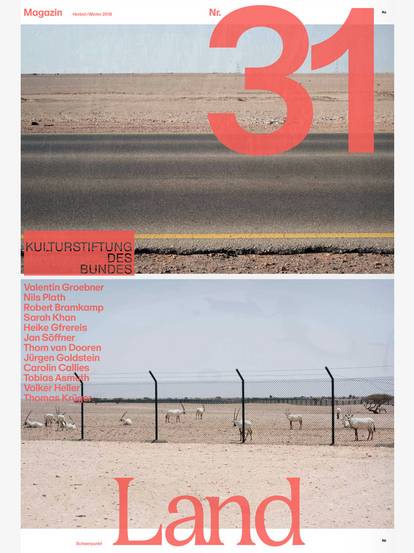
![[Translate to English:] Magazine 30](/fileadmin/_processed_/c/b/csm_magazin30_vorschau_9005f773d3.jpg)


